Today we are heading down to the western side of the park
and Weatherill Mesa. There are four main
places of interest on the Mesa: The Long
House (which requires a paid tour), the Step House, which is self-guided and
features a Basketweaver Pithouse AND a cliff dwelling side-by-side, a viewpoint
from which one can see a house called only Nordenskiöld Site #16 (Gustaf
Nordenskiöld is the Swede I mentioned yesterday who did a lot of the work
identifying and interpreting artifacts found here before absconding with a good
many of them), and a trail to the Badger House community, which is a collection
of pithouses from the 7th century.
First, though, we had to navigate breakfast. We would need to leave an hour before the
tour started in order to get down there and then to walk the ¾ mile to the
trailhead. So that meant leave at
8. So that meant be at breakfast by 7,
since we have no idea how that’s going to work, and we have to hustle up
lunch. So THAT means set an alarm for
6. (Boo!
Alarms on vacation are bad, but sometimes you just have to do it!) As it turned out, the breakfast setup is
pretty efficient.
It’s a cafeteria style
service, so you’re not waiting for table service. We also beat the big tour group into
breakfast by about 5 minutes, so we weren’t stuck behind 40 people. We were able to pick up lunch (we had a
choice between Mexican Street Corn Salad, Mexican Street Corn Salad, and
Mexican Street Corn Salad, so we opted for Mexican Street Corn Salad) at the
same time we paid for breakfast. We were
first in line for the morning, and the cashier had some trouble getting the
system going, so she had to ring everything up twice, and then she overcharged
us, so she had to process a refund. All
of this was infuriating the guy behind us, who was apparently in a tearing
hurry to get somewhere. I get it, Dude.…things
just don’t run smooth!
We also made a run past the registration desk to complain
again about the phone, which I consider to be a security issue, as that is the
access to 911, should we need help. We
also reported that the shower gel (which is what there is in place of soap) is
empty. The new 12-year-old at the desk didn’t
look any more enthusiastic about the phone than the one yesterday (still not
taking bets that it will get fixed), but she perked up a bit about shower gel,
as claimed she would report that to housekeeping.
We shall see.
I give it a 1 in 10 chance that the shower gel is filled by the time we
get back.
We got out in plenty of time, however, to make our tour
start.
We had tickets for the first Long House tour of the day,
which turned out to be an advantage, despite the rushing around a bit in the
morning, because when we got to the Long House, it was empty. The tours, are ranger-assisted, but not
ranger-led (which means that you can spend as much time as you like in the Long
House, and you can choose to listen to the ranger or not, as you like) come
thick and fast—one every half-hour, and the place gets crowded with the
stragglers from one or two tours ahead of you and all the new people from the
current tour. We had no stragglers to
contend with.
Under the heading of “Huh?”:
There is a big sign at the parking lot that says “For the Long House
tour, proceed down this path .75 miles to the trail head.” As we were approaching the path, a man
corralled a ranger who was working on another trail and asked, “The sign says
to walk .
75 miles to the trailhead for the Long House tour, so should I walk
down there?” I always told my students
that it was not true that there are no stupid questions; the stupid question is
the one you already know the answer to.
This guy not only already knew the answer, but actually stated it in his
question. Must have been too early in the
morning for him.
We toddled off down the path and made it to the trailhead a
few minutes before the rangers showed up.
There were two headed down to Long House, where they would be stationed
to answer questions, and one to guard the gate and make sure everyone who
enters has a ticket. Before she let anyone through, she gave us the safety
talk: this is a strenuous walk. It’s not long (about ¾ of a mile round-trip),
but you’re at 7200 feet and there is a 130’ drop in elevation. Coming back, that means a 130’ rise in
elevation. That’s like climbing the
stairs of a 13-story building. There are
also stairs followed by a series of switchbacks, and, to get up into Long
House, two 15-foot ladders.
If anyone
has heart problems or respiratory problems, you should really rethink this
tour. No one rethought, but one woman started down and then turned back when
she saw what the stairs looked like. No
doubt a wise decision.
As coming back was going to be at our own speed, I knew I
would be fine. I can make it up the
grade—even at 7200’—but not fast.
The trip down and back is definitely worth it. The Long House is a spectacular piece of
architecture, even today, nearly 1000 years after it was built. The ranger on our shift, Louann, gave a
really excellent presentation (NPS rangers very often do!), which not only
explained the features we should look at but also put the whole thing in human
context. Here are some of the points she
made:
Note: The next
section is a detailed account of what we were told about the history of the
place. I wrote it all down because I
didn’t want to forget it. If you’re not
interested, skip to the **** or straight to the photos.
1. We
came down to Long House by the sissy path.
This path with the switchbacks, and the concrete stairs did not exist in
1200 CE. Back then, the people who lived
here climbed up and down to and from the top of the cliff using hand and
footholds that they carved into the side of the cliff. We can’t see them from Long House, but they
are still there. (I can’t even imagine.)
2. Different
people did things differently, just as they do today. She illustrated this point by showing a
beautifully and meticulously built wall and contrasted it to one right next to
it which is a lot sloppier. She made the
point that maybe the guy who built the second wall was in a hurry because he
had a wife about to give birth and needed a house NOW. Or maybe this was the first wall he ever
built. Or maybe he just didn’t care
about the artistry of wall-building like the first guy did. We will never know, but it’s interesting to
see how different people did things differently.
3. These
houses were tiny. One room might be
8’x8’ or even smaller, and each family might have two rooms.
The houses tended to spread horizontally,
with your two rooms side-by-side, rather than going up so one room was on top
of the other. The building was four- to
five-stories high, however, so other families lived on top of your house, if
you were on the bottom floor. To get to
the higher rooms, you had to pass through all the houses below yours, and
sometimes you had to also pass horizontally through some in order to get to a
place where there was a ladder.
Everyone, she suggested, knew everyone else’s business. No secrets in a community like that!
4. The
ceilings were very short. Skeletal
evidence from the site shows that the people living around 1000-1200 CE were
about 5’ – 5’5”, but even for them, the ceilings were pretty short. She didn’t
say, but I’m guessing that this was to maximize space—the more floors we can
stack on each other the more families can have houses here.
5. In
answer to the question of why, after 600 years of living on top of the mesas
the people would have decided to undertake this tremendous and extraordinarily
difficult project of building and living in cliff houses, she said that we
don’t know for sure, but it is believed that overpopulation became a big
problem.
So many people had arrived here
to farm by the 11th century that the resources had been badly
stripped. The trees were largely Pinyon
Pines, which are very slow-growing, and once they were gone, there would be no
more for many years—decades, even. (We
read some information about the Pony Fire of 2000 which burned this mesa,
saying that it will actually be centuries before there is a mature Pinyon Pine
forest here again. Later we heard a ranger say that that fire burned
exceptionally hot, so it destroyed the soil, which delays the regrowth that
much more.) By about 1000 CE, resources
were very short, and people were having trouble feeding their children. Present-day archaeologists and park staff
speculate that members of the various clans started turning on each other in
fighting over food and water, but that this kind of infighting was anathema to
the peace-loving Pueblo people. In order
to protect themselves and their resources, families that wished to stay in the
area moved down the cliff into these cliff dwellings, which were incredibly
hard to approach and in which it was easy to protect food supplies which had
been stored for winter.
6. In
answer to the question of why everyone left the area, Louann said again that
they don’t know, but that it seems likely that the people who stayed here at
Mesa Verde were getting reports from places like present-day Albuqurque and
Santa Fe where there are rivers that living there is good. There’s plenty of water, and harvests are
excellent. And, she suggested, “no one
has bopped me on the head trying to take my food away for quite some time!” It’s all supposition, but it’s logical
supposition, and it remembers that these people were people, who wanted to make
a good life for their families—and probably wanted to live and work near their
families and friends.
7. The
people did not just disappear from here.
She said that it used to be taught in schools that the Anasazi just
disappeared entirely and were never heard from again. She said that this is a very offensive
interpretation to the present-day Pueblo people, as it just erases their
ancestors (who were NOT, as we saw earlier, “Anasazi”) from history.
In fact, there are 21 Pueblos descended from
the Ancient Pueblo People in the four-corners area today, and many of those
people know where their ancestors lived, and some even know which cliff house
they lived in.
She told us a lot of interesting things about the features
of the building, but I will put those in the notes for the photos.
*******************
This is an excellent tour, and I recommend it highly if
you’re ever visiting Mesa Verde and you are up to the walking. Well worth the trouble (and the cost, which
is only $8 a person).
We left the Long House and hiked back up the trail, making
it back to the gate by 10:30, which is just the 90 minutes that the brochure
suggests that the tour will take. I
found the climb back up to be strenuous, but easier, actually, than I had
expected. The problem is that it is
still uphill, through gradually, all the way back to the car for another ¾ of a
mile! This is no easy feat for
people--or at least me!—who live in a house that is almost exactly 300’ above
sea level!
Tim wanted next to take the walk down to the Step House,
which is a much shorter walk (about ¾ of a mile round-trip total—no ¾ mile
lead-in), but which required another 100’ drop and then climb in elevation, and
I thought maybe I shouldn’t try it. So I
read park information while he went down there.
He took some nice photos, which I will post with descriptions. The Step House features a pithouse
side-by-side with the cliff house, so you can see the difference in the way
people lived over a 600-year span.
We ate our Mexican Street Corn Salads in the roofed picnic
area, and then decided to walk down to the Nordenskiöld #16 overlook. Gustaf Nordenskiöld, when he came here in
1891, numbered the various sites he worked on, and this particular one doesn’t
have a modern name like Long House (#12) does.
You can’t get to Nordenskiöld #16, but you can get to a spot across the
canyon from it and from there you have a beautiful view. When you look at the photos, notice how far
up to the top of the cliff it is—and the people who lived here (about 50 in
this site) went up there every day in the growing season, at least, to farm,
and climbed back down again at the end of the day, using the same kind of hand-
and foot-holds that were used at Long House.
It started raining—lightly—just as we got back to the
parking lot from this last walk. This
was pretty much all we had planned for the day anyway; unfortunately, a big
chunk of the park that we had planned on seeing is closed right now, so we have
some extra time. It is supposed to rain
all day tomorrow, as well, so we will have to wait and see how much we are
going to be able to see. We can at least
do the drive around the other loop which is open (on the east side of the
park), but whether we can get out and take any walks remains to be seen.
Back in the lodge, while awaiting our 8:15 dinner
reservation, I got caught up on all these blogs and we tried one more time to
get the phone, which was not fixed while we were gone, fixed and the shower gel,
which was not filled while we were gone, filled.
This time, when I got to the head of the
line, the person I was talking to was Damien N., the maintenance manager. He apologized, and he said that this is the
first time he’s heard about the phone. I
told him I had no trouble believing that at all. While he was talking to me, he was pulling
out a replacement phone and hooking up the handset. He said he would take care of it and the
shower gel (clearly not his job) right away.
Two other people who were there behind the desk and looked like managerial
sorts asked who I had talked to previously.
Sounds like the two who failed to report might be in for a little
talking to.
We went downstairs to the one room in the place which gets
actual Internet service and checked email, and by the time we got back to the
room, we had a working phone. If you
just get to the right person, the job gets done. The problem is getting to the right person!
Dinner at 8:15; report to come. Perhaps this will run more smoothly than last
night…!
After dinner report:
All went smoothly! We went down
15 minutes early, just in case they could seat us, and they did. The dinner was excellent, and the waiter
didn’t make any mistakes. I saw Damien
N. again to tell him thank you one more time for fixing our phone and filling
the shower gel. And when we got back,
there was a huge Mule deer right under our balcony. Nice finish to the day.

 Mesa Verde National Park, Colorado, United States
Mesa Verde National Park, Colorado, United States
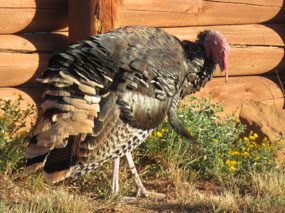
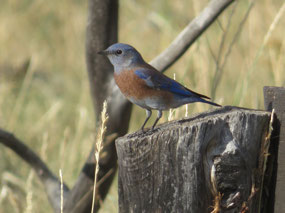
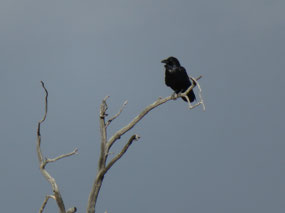
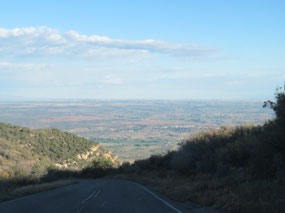

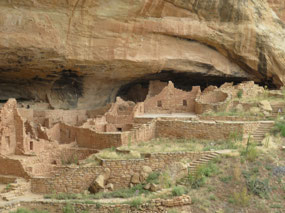
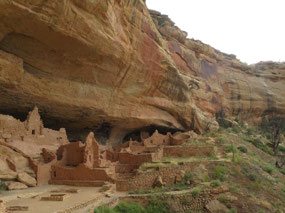
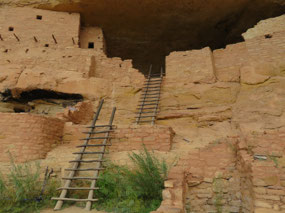
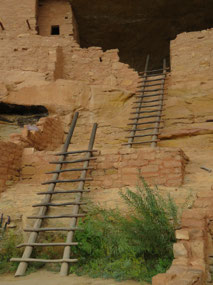
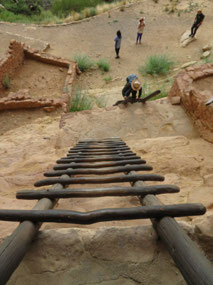
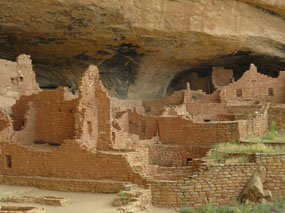

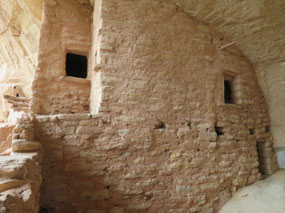
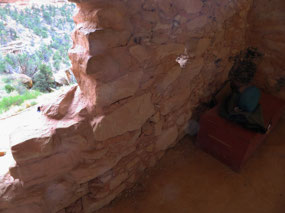
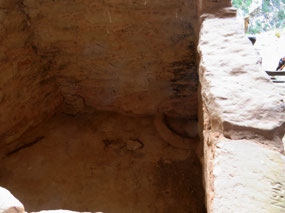
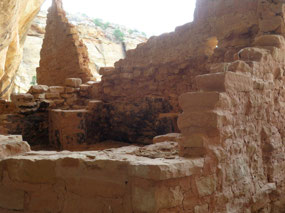

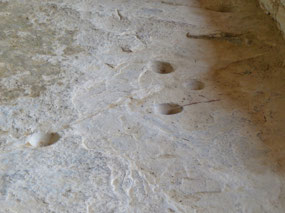
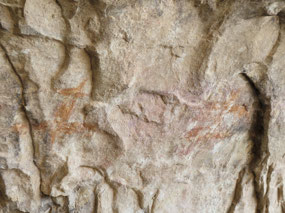
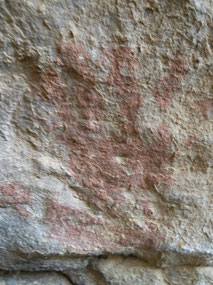
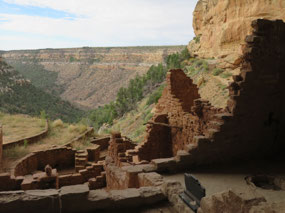
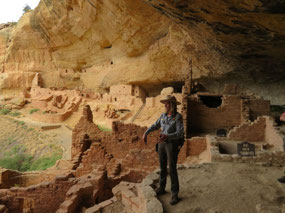
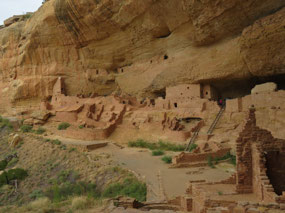
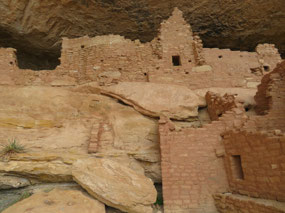
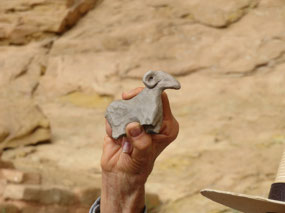


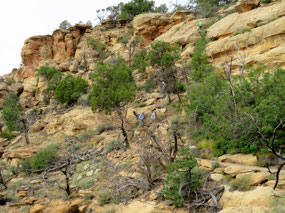
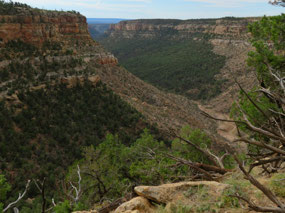
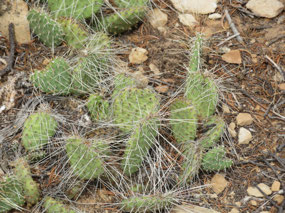
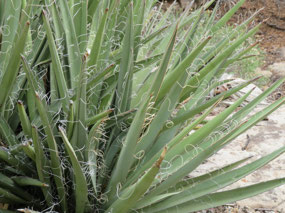
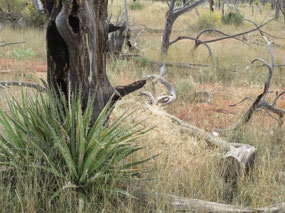
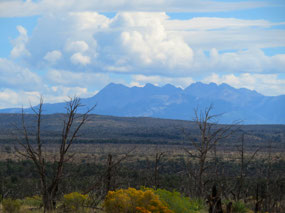
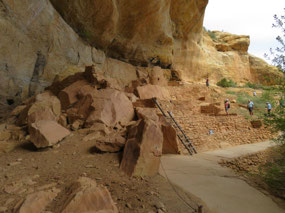
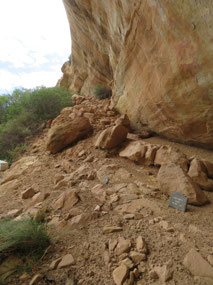
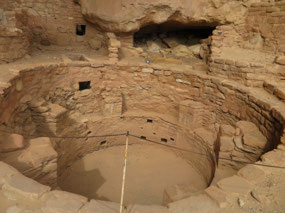
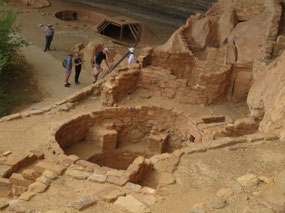
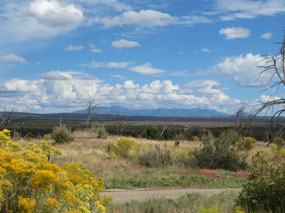
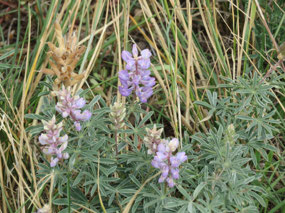
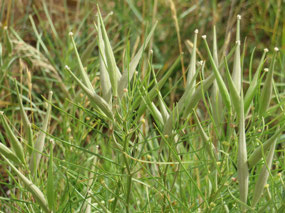
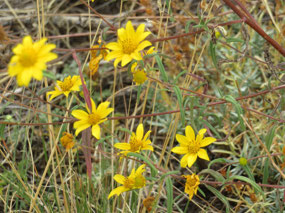
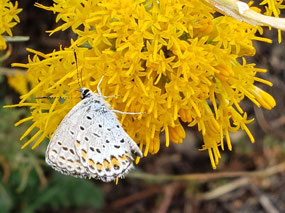
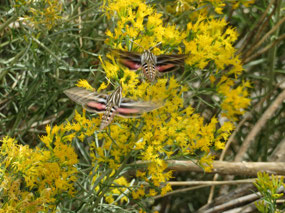
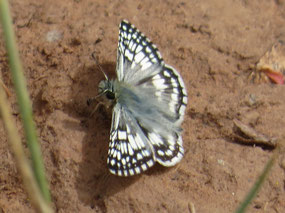
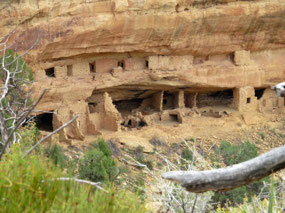
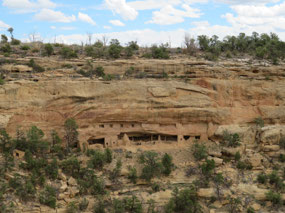

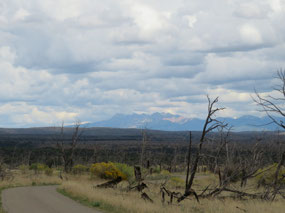
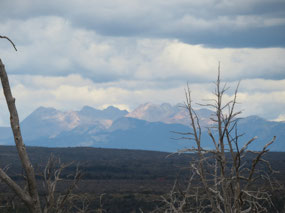
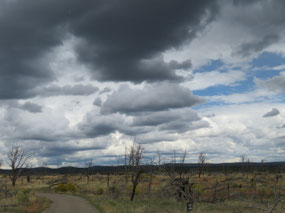
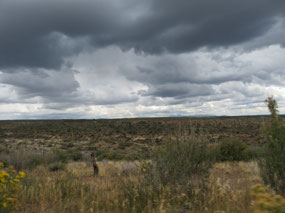

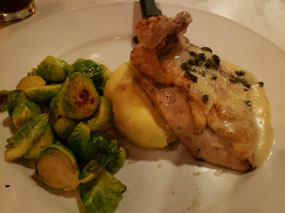
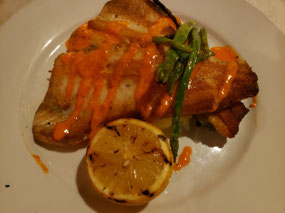

2025-05-22